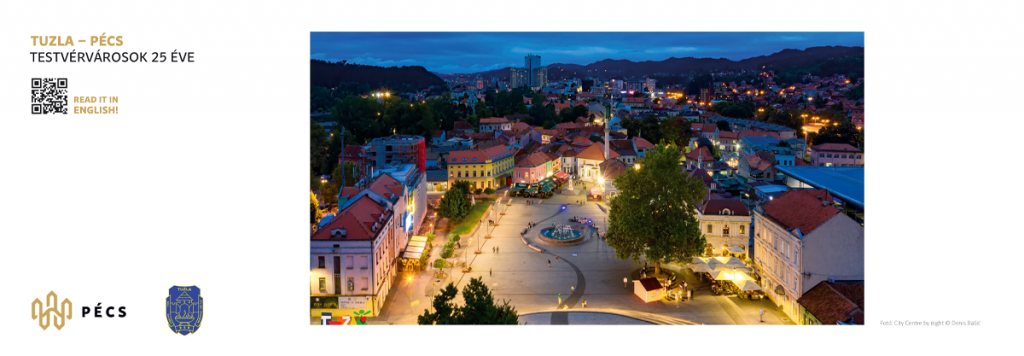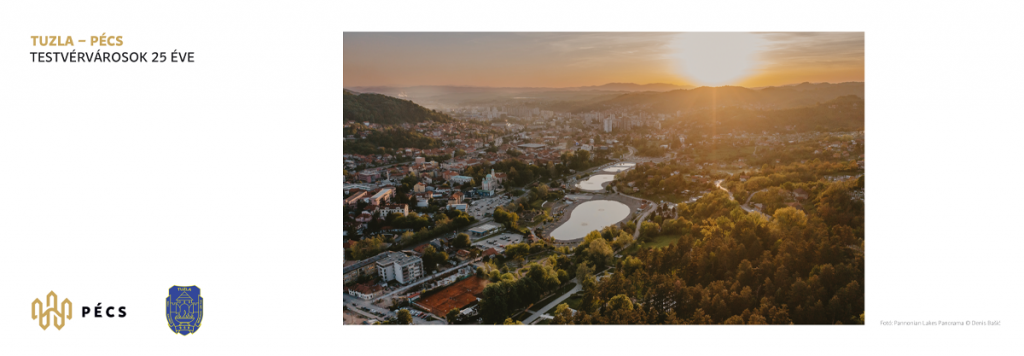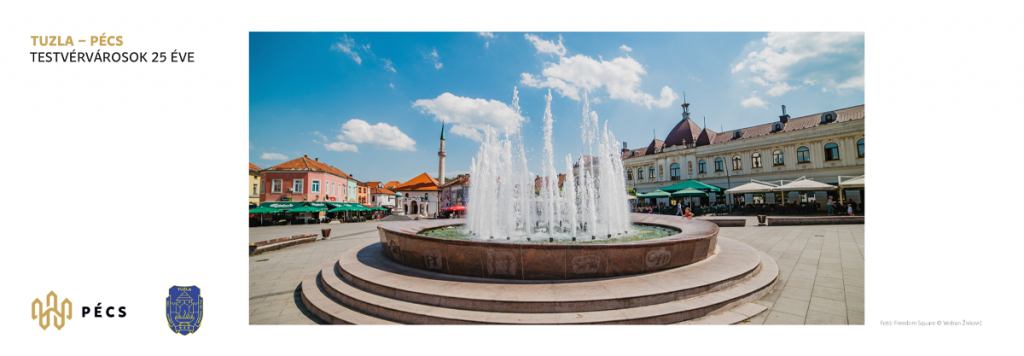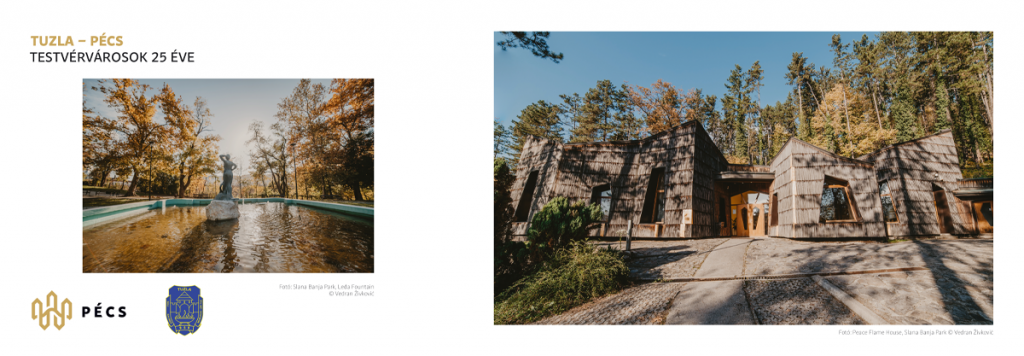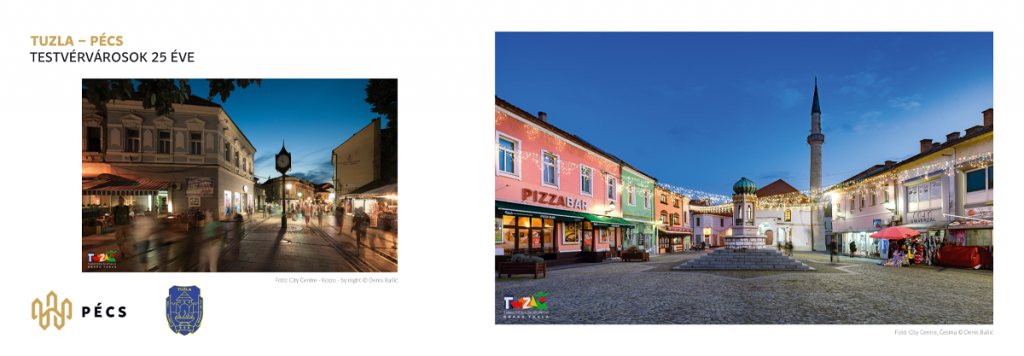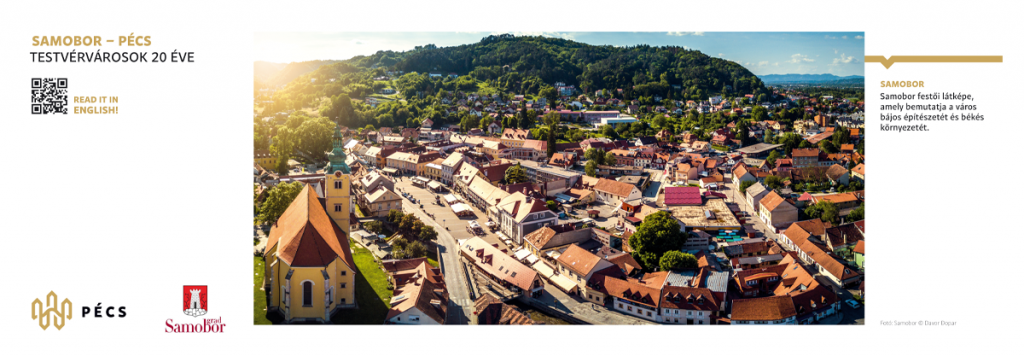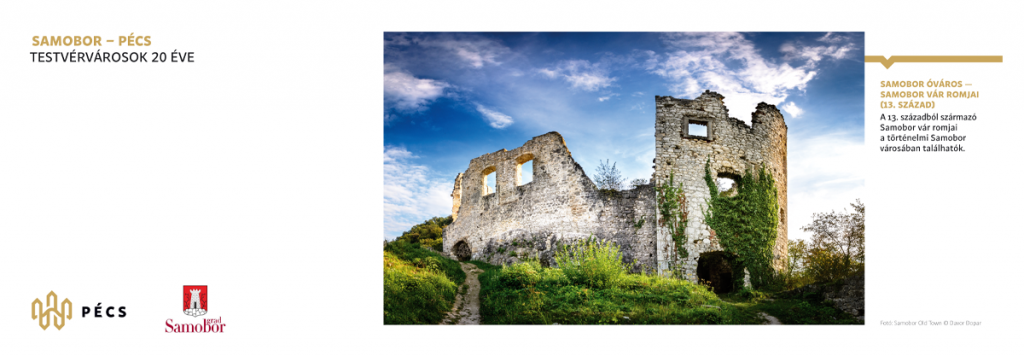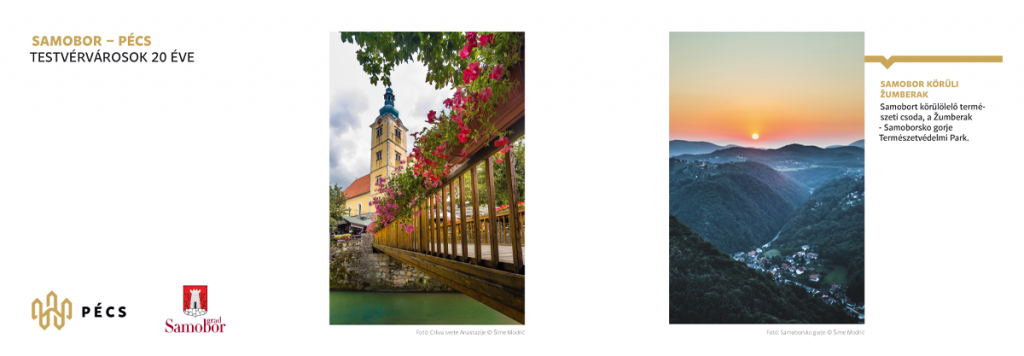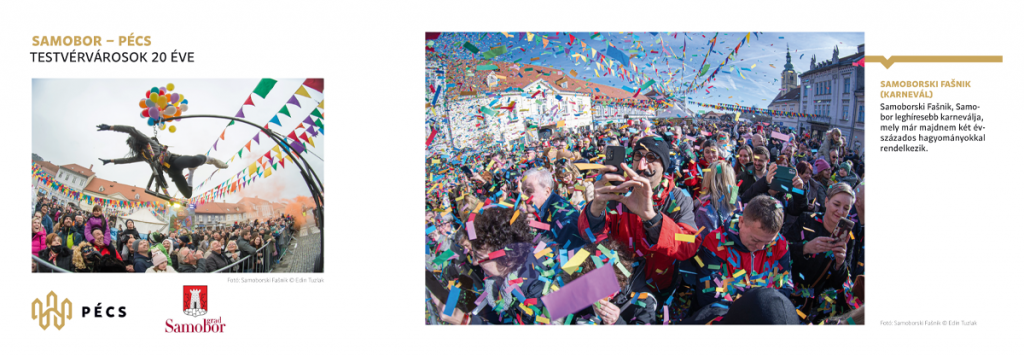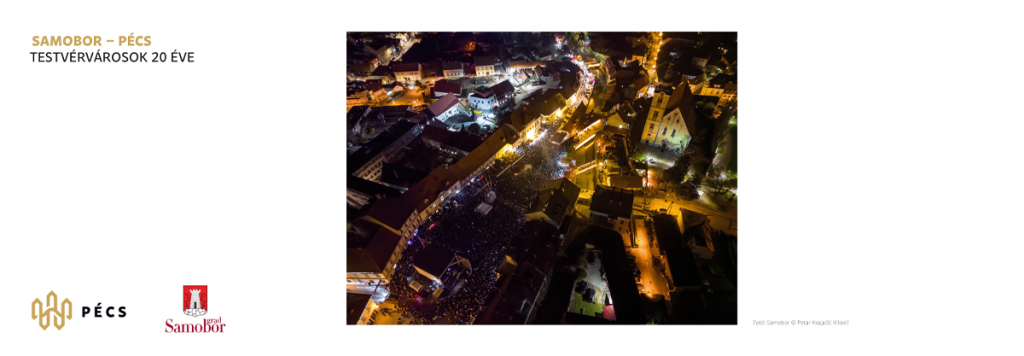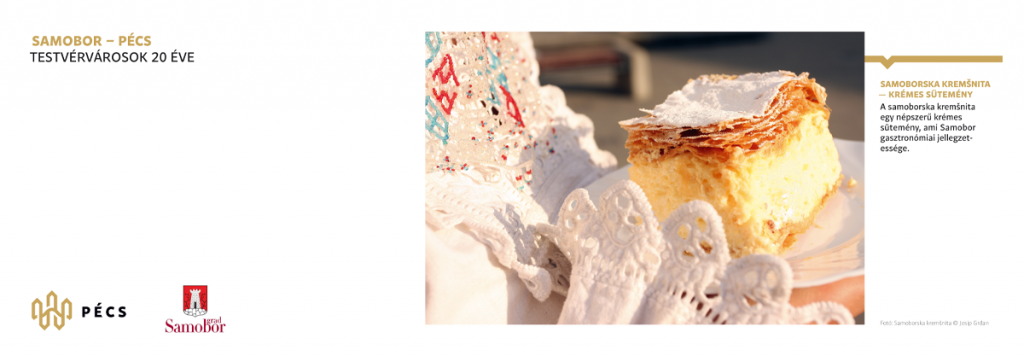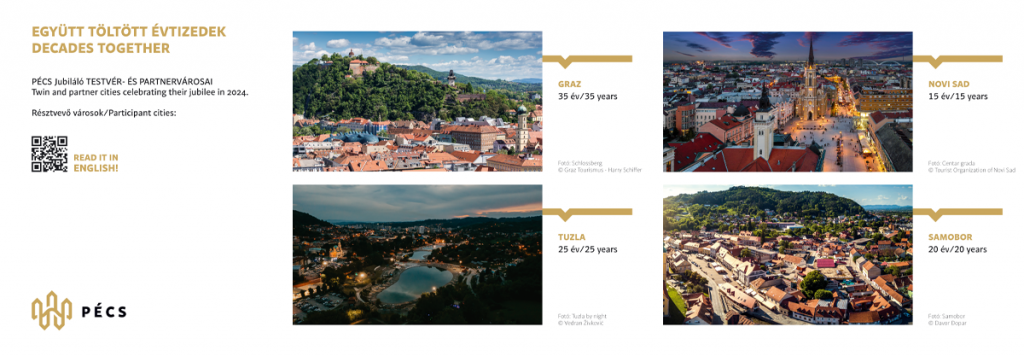
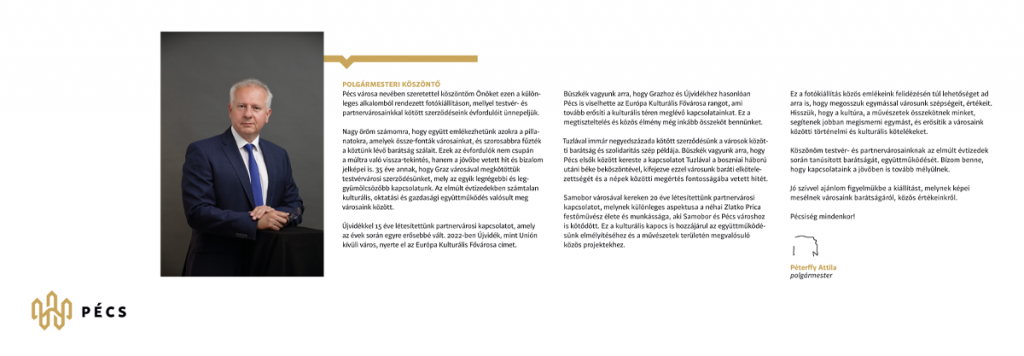

more…
On behalf of the City of Pécs, I would like to welcome you to this special photo exhibition to celebrate the anniversaries of our twin and partner cities. It is a great pleasure for me to remember the moments that brought our cities together and strengthened our bonds of friendship. These anniversaries are not only a time to look back but also a symbol of faith and trust in the future.
It is 35 years since we signed our twinning agreement with the city of Graz, one of our longest and most fruitful relations. Over the past decades, our cities have enjoyed countless cultural, educational and economic collaborations.
We have had a twinning relationship with Novi Sad for 15 years, which has grown from strength to strength over the years. In 2022, Novi Sad was awarded the title of European Capital of Culture as a city outside the EU.
We are proud that, like Graz and Novi Sad, Pécs has been awarded the title of European Capital of Culture, further strengthening our existing links in the cultural field. This honour and shared experience brings us even closer together.
Our quarter-century treaty with Tuzla is a fine example of city friendship and solidarity. We are proud that Pécs was one of the first cities to seek contact with Tuzla after the peace after the Bosnian war, demonstrating our city’s commitment to friendship and its belief in the importance of understanding between peoples.
We have been twinned with the city of Samobor for almost 20 years. A special aspect of this is the life and work of the late painter Zlatko Prica, who was linked to both Samobor and Pécs. This cultural link also contributes to deepening our cooperation and joint projects in the field of the arts.
This photo exhibition is an opportunity to recall our common memories and share our city’s beauty and values. We believe that culture and the arts bring us together, help us to know each other better and strengthen the historical and cultural ties between our cities.
I thank our sister and partner cities for their friendship and cooperation over the past decades. I look forward to deepening our relations in the future.
I warmly recommend the exhibition, whose pictures tell the story of our cities’ friendship and our common values.
Pécs always!
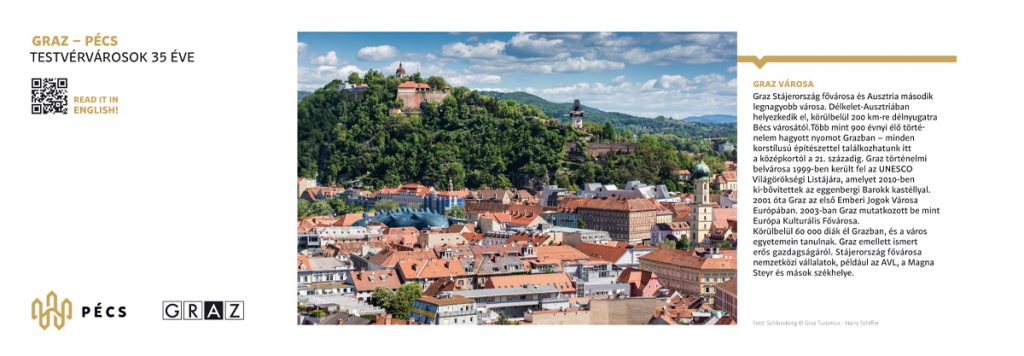
more…
The City of Graz:
Graz is the capital of Styria and the second-largest city in Austria. It is situated in southeast Austria and about 200km southwest of Vienna.
Over 900 years of living history have left its traces in Graz – you will find architecture of all styles here, from the Middle Ages through to the 21st century. The city centre of Graz was included in the UNESCO World Heritage List in 1999 and extended by the Baroque Eggenberg Palace in 2010.
Since 2001, Graz is the first Human Rights City in Europe.
In 2003, Graz presented itself as Cultural Capital of Europe.
Around 60,000 students live in Graz and attend the universities of the city.
Graz is also known for its prosperous economy. The capital of Styria is the seat of top international companies, for example AVL, Magna Steyr etc.
Photo: Schlossberg © Graz Tourismus – Harry Schiffer
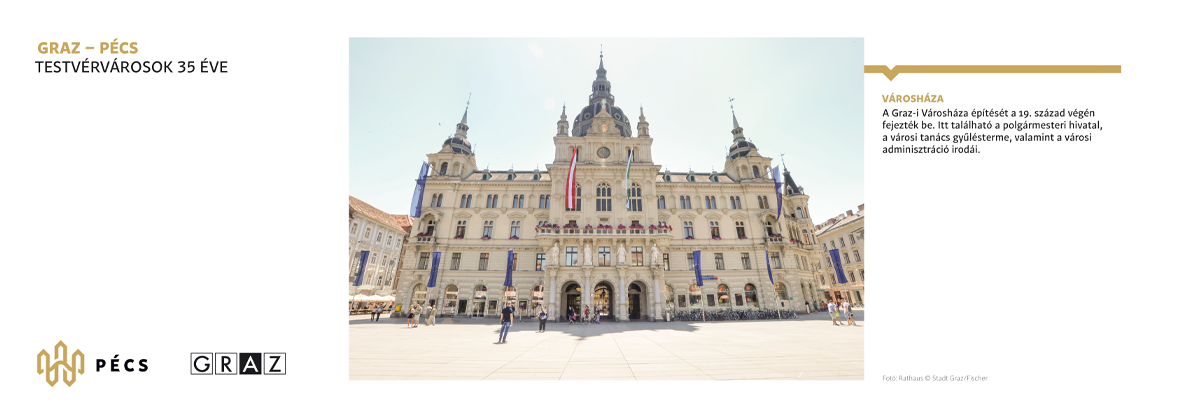
more…
City Hall:
Graz City Hall was completed at the end of the 19th century.
It houses the mayor’s office, the municipal council assembly hall, and offices for the city administration.
Photo: Rathaus © Stadt Graz/Fischer
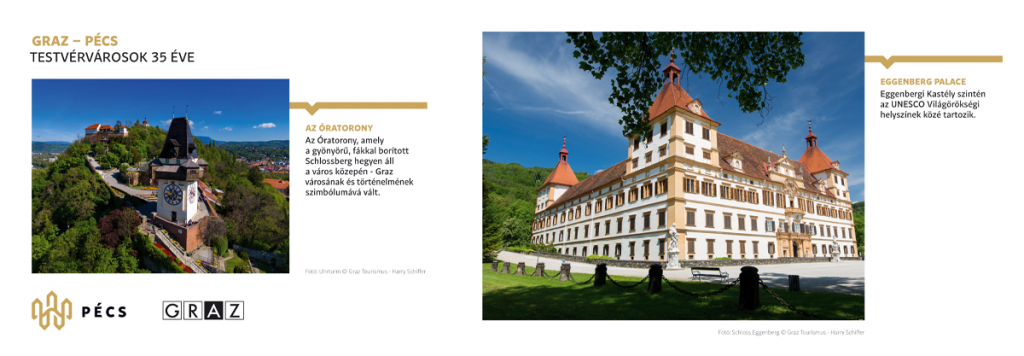
more…
The Clock Tower:
The clock tower standing on the Schlossberg which is a beautiful mountain covered in trees in the middle of the city, has become a symbol of Graz and its history.
Photo: Uhrturm © Graz Tourismus – Harry Schiffer
Eggenberg Palace:
“Eggenberg Palace” also belongs to the UNESCO World Heritage Sites.
Photo: Schloss Eggenberg © Graz Tourismus – Harry Schiffer
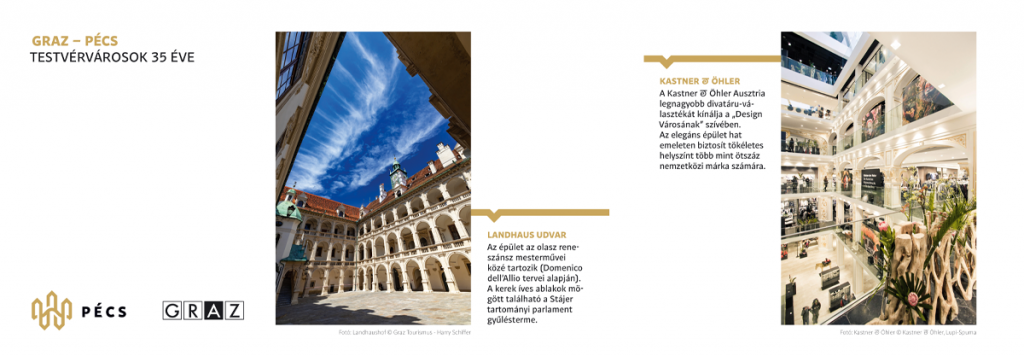
more…
Landhaus Courtyard:
It ranks among the masterpieces of the Italian renaissance (Domenico dell’Allio).
Behind the round arched windows, the Styrian regional parliament meets in the assembly hall.
Photo: Landhaushof © Graz Tourismus – Harry Schiffer
Kastner & Öhler, Graz:
In the heart of the „City of Design” Kastner & Öhler offers Austria’s largest selection of fashion items. The elegant building provides the right setting for more than 500 international brands on six floors!
Photo: Kastner & Öhler © Kastner & Öhler, Lupi-Spuma
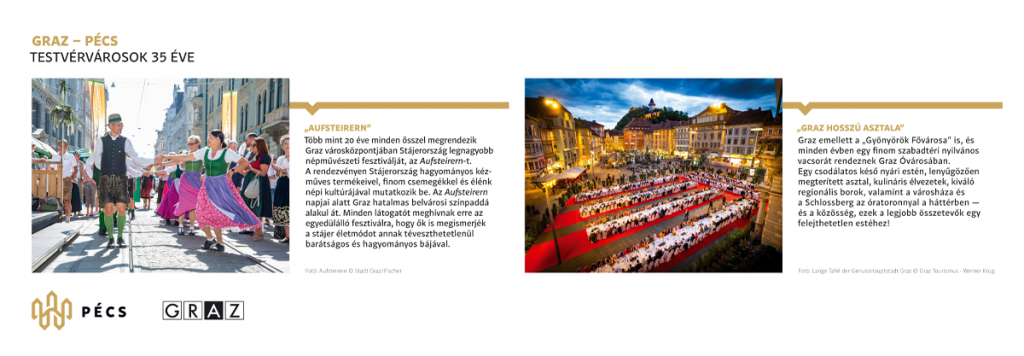
more…
„Aufsteirern“
For more than 20 years, the largest Styrian folk culture festival „Aufsteirern” has been held in the city center of Graz every autumn.
Styria presents itself with traditional handicrafts, delicious delicacies and lively folk culture. During the days of „Aufsteirern”, Graz is transformed into a huge inner city stage and all visitors are invited to this unique festival to get to know the Styrian way of life with its unmistakably friendly and traditional charm.
Photo: Aufsteirern © Stadt Graz/Fischer
„Long Table of Graz”:
Graz is also the „Capital of Delight” and every year, a delicious open air dinner takes place in the Old Town of Graz. A wonderful late summer’s evening, a stunningly laid table, superb culinary delights, top regional wines and the backdrop of the city hall and the Schlossberg with its clock tower – these are the ingredients for an unforgettable evening!
Photo: Lange Tafel der GenussHauptstadt Graz © Graz Tourismus – Werner Krug
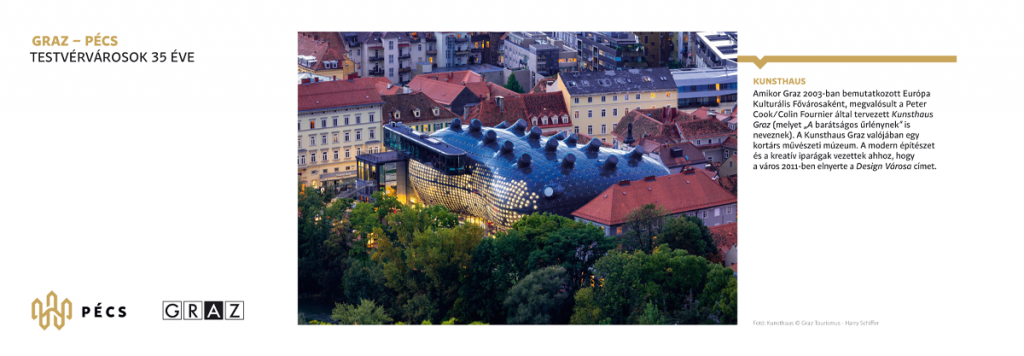
more…
Kunsthaus:
When Graz presented itself as Cultural Capital of Europe in 2003, the „Kunsthaus Graz” (called „The friendly alien“) by Peter Cook / Colin Fournier was realized.
The Kunsthaus Graz is a museum for contemporary art.
Modern architecture and creative industries led to the title „City of Design” in 2011.
Photo: Kunsthaus © Graz Tourismus – Harry Schiffer
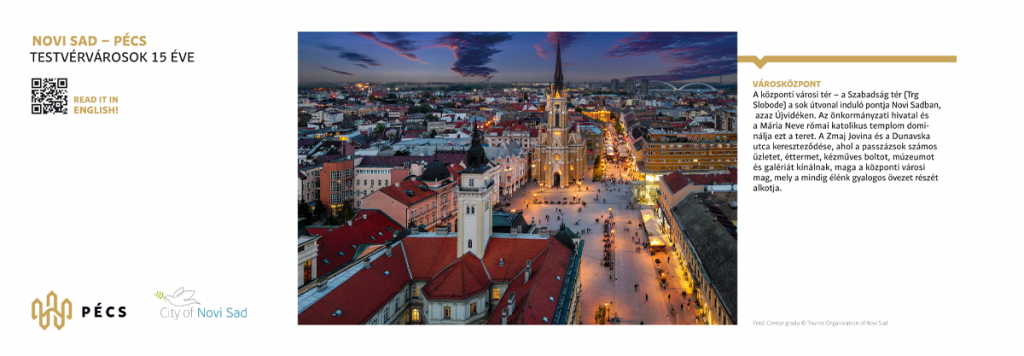
more…
Opis centar grada:
The central city square – Trg Slobode (Liberty Square) is the starting point of many Novi Sad tourist routes.
The City Hall and Roman Catholic Church of the Name of Mary are some of the buildings dominating this square. Zmaj Jovina and Dunavska Street intersected with passages accommodating a multitude of shops, restaurants, craft shops, museums and galleries make the parts of always lively pedestrian zone of the central city core.
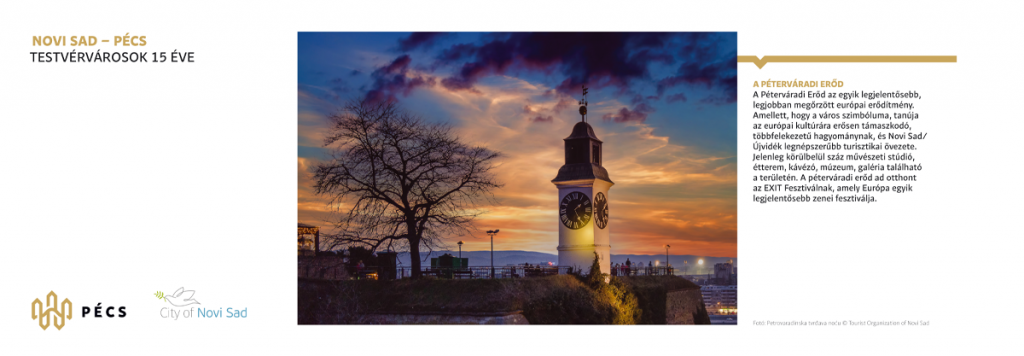
more…
Petrovaradin Fortress and Danube street
Petrovaradin Fortress belongs to the most significant, preserved European fortifications.
In addition to being the symbol of the city it is also the witness to multiconfessional tradition that relies strongly on European culture and most attractive tourist zone of Novi Sad. It is currently the area with around one hundred of art studios, restaurants, cafes, museums, galleries… Petrovaradin Fortress is the venue of the EXIT Festival, one of the most significant music festivals in Europe
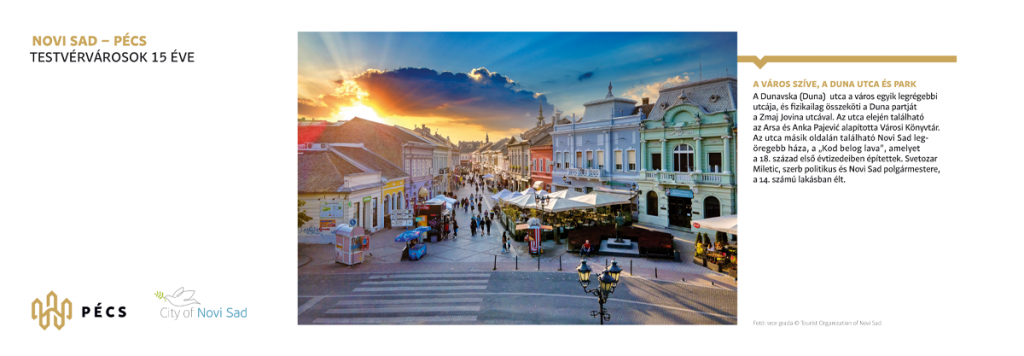
more…
Srce grada Dunavska ulica i park
Dunavska street is one of the oldest streets in the city, and it physically links the river bank of the Danube and Zmaj Jovina Street.
At the beginning of the street is the City Library- the endowment of Arsa and AnkaPajevic. On the opposite side is the oldest house in Novi Sad, called ‘’Kodbelog lava’’ and built in the first decades of the 18th century. SvetozarMiletic, Serbian politician and mayor of Novi Sad, lived in the number 14.
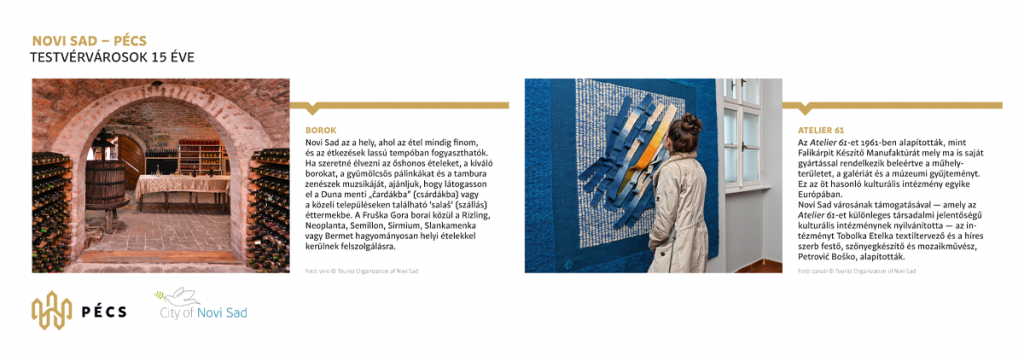
more…
Vino
Novi Sad is a place where food is always delicious, and meals can be eaten at a slow pace.
If you wish to enjoy autochthonous dishes, excellent wines, fruit “rakijas”, and music of “tamburitza” players, we recommend you to go to one of the “čardas” along the Danube or “salaš” restaurants in the nearby settlements. The wines from Fruška Gora: Riesling, Neoplanta, Semillon, Sirmium, Slankamenka, or Bermet are served traditionally with local dishes.
Zanati Atelje 61
Atelier 61 was established in 1961 as an Institution for Tapestry Manufacture. It is a unique institution of culture compared to museum and gallery institutions at the West Balkans and the only one of a complex type in Serbia with its own manufacture (workshop area, gallery, museum collection). It is one of only five similar cultural institutions in Europe.
The founders of “Atelier 61” are textile designer Etelka Tobolka and the famous Serbian painter, tapestry maker and mosaicist Boško Petrović with the support of the City of Novi Sad, which proclaimed “Atelier 61” a cultural institution of special social significance.
During the 60-year history of “Atelier 61”, in co-operation with over 300 artists, about 900 tapestries were woven. “Atelier 61” has a National Collection of Tapestries, which is considered one of the largest collections in this area.
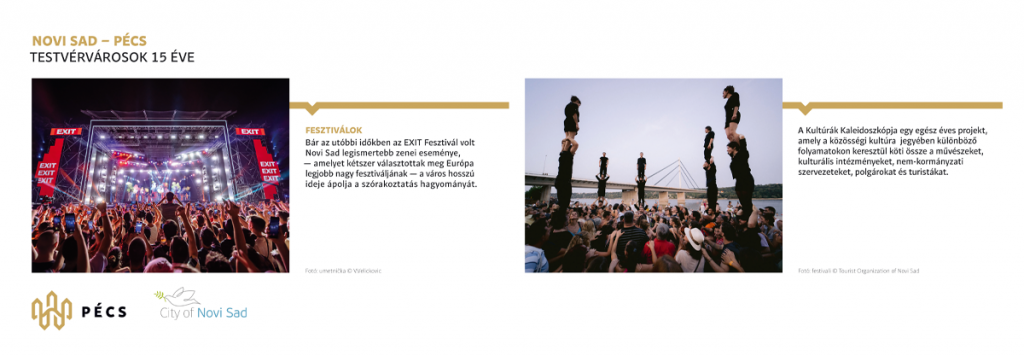
more…
Festivali
Although in the recent past exit festival has been the most famous musical event of novi sad, which has been selected twice as the best major festival in europe, the city has long cherished the tradition of good entertainment.
The kaleidoscope of culture is a yearlong project of culture of togetherness, which, through different processes, connects artists, cultural institutions, non-governmental organisations, citizens and tourists, in order to present places and programmes across the city, promoting a unique, distinct image of novi sad by the end of summer.
More than 200 other events are organised in novi sad, and the opportunities for a good time in this city can be enjoyed on a daily basis
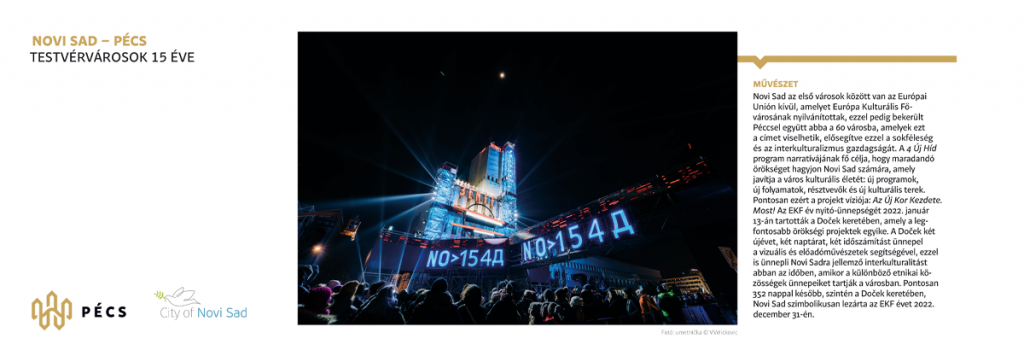
more…
Umetnička
Novi Sad is among the first cities outside the European Union to be declared the European Capital of Culture and thus became one of the 60 cities that took this title, fostering the richness of diversity and interculturalism.
The main idea of the ‘4 New Bridges’ programme narrative aims to leave Novi Sad firm legacies that improve the cultural life of the city: new programmes, new processes, involved people (citizens, cultural institutions, associations, organisations, artists) and new spaces for culture. That is exactly why the vision of the project is: ‘The Beginning of New. Now!’
The opening ceremony of the title year was held on 13 January 2022 within Doček, one of the most essential legacy projects. Doček celebrates two New Years, two calendars, two-time calculations through visual and performing arts and thus celebrates the interculturality characteristic of Novi Sad at a time when different ethnic communities celebrate their holidays in the city. Exactly 352 days later, also within Doček, Novi Sad will symbolically close the title year on 31 December 2022.
